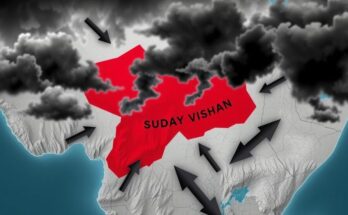The IDF has established military positions in Syria, Gaza, and Lebanon, indicating a strategic shift in Israeli defense policy. This analysis examines the implications of these developments, including potential risks and challenges. In Syria, Israel’s proactive measures aim to secure borders, while in Gaza, a possible security perimeter raises international scrutiny. Meanwhile, a minor IDF presence in Lebanon may deter conflicts but complicates relations with Hezbollah, highlighting the region’s delicate balance of power.
The current geopolitical landscape in the Middle East has been transformed by the Israeli Defense Forces (IDF) establishing military positions in Syria, Gaza, and Lebanon—a region where the Israeli government previously made no territorial claims. Historically, the IDF has maintained a presence in the West Bank, but its recent expansions into Syria and other areas indicate a strategic shift. This analysis explores the implications of these developments and the potential challenges they present.
Israel’s military involvement in Syria has taken many by surprise. Initially, the expectation was that the Assad regime would maintain control, thus negating the need for Israeli engagement. However, after an unexpected military operation on December 7-8, Israel found itself taking proactive measures to prevent potential threats from Syrian jihadist groups, as the Assad government struggled to stabilize the country.
The strategic rationale behind Israel’s continued presence in Syria is to ensure a buffer against hostile forces and possible invasions. Recent internal conflicts near Damascus have demonstrated the importance of this buffer; however, they also highlight the risks of being drawn into Syria’s complex internal disputes, which could complicate Israel’s security interests.
In Gaza, negotiations have led to an agreement for a full IDF withdrawal, contingent on eliminating Hamas’s influence in the area. The possibility of maintaining a security perimeter of up to 1,100 meters could afford additional protection to Israeli border communities. However, any military actions against civilian protests could expose Israel to significant international scrutiny and potential legal repercussions.
Interestingly, Israel’s minor military presence in Lebanon, consisting of several hundred soldiers, poses a different challenge. While Hezbollah previously represented a prominent threat, their current weakened state may allow for limited Israeli engagement. Nonetheless, Hezbollah’s identity as a resistance group complicates the narrative around Israeli military presence, as they seek justification for their actions against Israel in light of historical grievances.
Despite Hezbollah’s current weaknesses, they may regain strength and confidence, leading to potential escalations. The IDF’s positions in Lebanon could serve dual functions as both a deterrent and a focal point for future hostilities, emphasizing the delicate balance of power in the region.
The IDF’s military presence in Syria, Gaza, and Lebanon poses both opportunities and challenges for Israel. While serving as deterrents against potential threats, these positions also invite risks of entanglement in broader regional conflicts and international legal implications. The evolving dynamics with groups like Hamas and Hezbollah require a careful and strategic approach to maintain security without provoking further instability. Thus, Israel must navigate these complexities while considering the implications on future regional security.
Original Source: www.jpost.com




